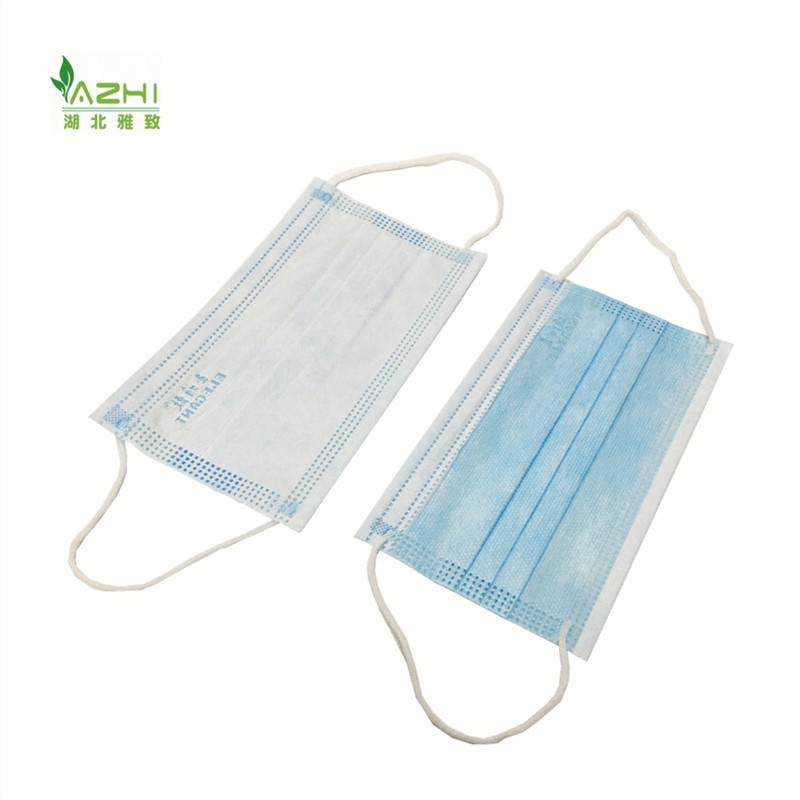News
The Essential Guide to Disposable Medical Clothing: Importance and Applications
Aug 08,2025
Disposable medical clothing has become an indispensable component in healthcare and clinical environments, providing a critical barrier between patients and healthcare providers while ensuring optimal hygiene and safety. In recent years, the demand for disposable medical clothing has surged, thanks to increased awareness of infection control and the necessity for protective barriers in medical settings. This article aims to provide insightful information about disposable medical clothing, its applications, and the benefits it offers in the healthcare industry.
One of the primary functions of disposable medical clothing is infection prevention. Healthcare workers are often exposed to various pathogens, bodily fluids, and contaminants during their daily activities. Disposable gowns, caps, masks, and gloves serve as protective layers that help reduce the risk of transmission of infectious agents between patients and staff. By utilizing disposable attire, healthcare facilities can minimize the potential for cross-contamination, thereby enhancing patient safety.
Moreover, disposable medical clothing is designed for convenience and efficiency. Unlike traditional reusable garments that require laundering and maintenance, disposable options can be used once and discarded, allowing for significant time savings in busy healthcare environments. This ease of use not only streamlines workflows but also supports high standards of cleanliness, as there is no need to transport and wash contaminated clothing.
In addition to infection control and operational efficiency, disposable medical clothing plays a vital role in compliance with health and safety regulations. Many healthcare facilities are governed by strict guidelines regarding personal protective equipment (PPE). By providing staff with appropriate disposable garments, institutions can ensure adherence to these regulations, safeguarding both employees and patients alike.
Another important aspect is the variety of disposable medical clothing available. From surgical gowns and isolation gowns to coveralls and shoe covers, these garments come in various styles and materials to suit different medical procedures and environments. This versatility allows healthcare providers to select the appropriate clothing based on specific needs, further enhancing safety and comfort during medical tasks.
Sustainability is also a growing concern in the production of disposable medical clothing. Manufacturers are increasingly focusing on eco-friendly materials and processes, aiming to reduce the environmental impact of disposable items. Innovations in biodegradable fabrics and recycling initiatives are paving the way for a more sustainable approach to disposable medical clothing, addressing both health and environmental needs.
In summary, disposable medical clothing is a crucial element in the healthcare industry, providing essential protection against infections and ensuring compliance with safety standards. Its convenience and efficiency make it a preferred choice for many healthcare facilities, while advances in sustainability are shaping the future of these products. By understanding the importance and applications of disposable medical clothing, healthcare providers can better protect themselves and their patients, ultimately leading to improved health outcomes.
One of the primary functions of disposable medical clothing is infection prevention. Healthcare workers are often exposed to various pathogens, bodily fluids, and contaminants during their daily activities. Disposable gowns, caps, masks, and gloves serve as protective layers that help reduce the risk of transmission of infectious agents between patients and staff. By utilizing disposable attire, healthcare facilities can minimize the potential for cross-contamination, thereby enhancing patient safety.
Moreover, disposable medical clothing is designed for convenience and efficiency. Unlike traditional reusable garments that require laundering and maintenance, disposable options can be used once and discarded, allowing for significant time savings in busy healthcare environments. This ease of use not only streamlines workflows but also supports high standards of cleanliness, as there is no need to transport and wash contaminated clothing.
In addition to infection control and operational efficiency, disposable medical clothing plays a vital role in compliance with health and safety regulations. Many healthcare facilities are governed by strict guidelines regarding personal protective equipment (PPE). By providing staff with appropriate disposable garments, institutions can ensure adherence to these regulations, safeguarding both employees and patients alike.
Another important aspect is the variety of disposable medical clothing available. From surgical gowns and isolation gowns to coveralls and shoe covers, these garments come in various styles and materials to suit different medical procedures and environments. This versatility allows healthcare providers to select the appropriate clothing based on specific needs, further enhancing safety and comfort during medical tasks.
Sustainability is also a growing concern in the production of disposable medical clothing. Manufacturers are increasingly focusing on eco-friendly materials and processes, aiming to reduce the environmental impact of disposable items. Innovations in biodegradable fabrics and recycling initiatives are paving the way for a more sustainable approach to disposable medical clothing, addressing both health and environmental needs.
In summary, disposable medical clothing is a crucial element in the healthcare industry, providing essential protection against infections and ensuring compliance with safety standards. Its convenience and efficiency make it a preferred choice for many healthcare facilities, while advances in sustainability are shaping the future of these products. By understanding the importance and applications of disposable medical clothing, healthcare providers can better protect themselves and their patients, ultimately leading to improved health outcomes.
Aug 08,2025
Category:
knowledge
Related Information








 English
English English
English Español
Español Português
Português اللغة العربية
اللغة العربية





